
In case you’re ever stuck in the dark: Here are some illuminating answers.
Frequently Asked Questions
How does the Ledlenser warranty work?
At Ledlenser USA, we take extraordinary measures so your Ledlenser light will give you many years of dependable service. If it doesn't, we will gladly repair or replace it, at our discretion, with one of equal or greater value under our 7-year guarantee. Visit the warranty page to learn how easy it is to get Warranty service.
With fading luminosity, the light starts blinking at regular intervals – what does that mean?
Tip: Treat the battery compartment on a regular basis with contact spray to avoid leakage problems. You should remove your batteries from your light if you do not use it for a long time.
If the light still doesn’t work after cleaning and replacing your old batteries for new ones, you should contact your retailer if the purchase date is less than 24 months ago. Alternatively you can use the support form on our website. You will find it here.
Please select the field “Support: Warranty/Repairs for End Customers” in the form and fill it out completely. Our staff in support can then decide whether to send you the respective replacement part (battery magazine or end cap, depending on the model) based on the warranty/goodwill.
Is it harmful to shine a light directly in someone’s eyes?
Please be aware that our lights are not designed to be directly shone into people’s eyes – this can cause damage to the eye.
The rays produced by the LEDs built into our lights go beyond the wavelength spectrum that our eyes recognize as light. In the spectrum of regular light sources we have ultraviolet rays (UV) as well as infrared rays (IR). These invisible rays present, just like blue portions in visible light, a significant danger for our eyes if there is direct exposure.
Some of my flashlight’s functions no longer work – what should I do?
Some models, e.g. lights in the M-Series, can be programmed. To program your light you will need the Quick User Guide or the Smart Instruction Card.
You will find this under the menu item “Service & Warranty” under Downloads. Here you can select your light and download the document as a PDF.
What do I do if the batteries in my light have leaked?
Firstly, carefully remove the batteries from your light.
If your model has a battery compartment, you will most likely no longer be able to use this. If you would like to attempt to clean it, use a penetrating or multifunction oil to clean the leaked battery fluid. You can find this oil at any hardware store.
In any case, you should always clean the inside of the light compartment. This can also be cleaned with the described agents and for example, a small, medium-to-hard wire brush.
- The head of your light is comprised of two different parts. The purely cylindrical part with the reflector lens and the Speed Focus carriage which tapers off into a tube. In some newer models the cylindrical part is silver.
- Unscrew the cylinder from the Speed Focus carriage in anticlockwise direction.
- Please note that you should NEVER TOUCH THE LED.
- Remove the Speed Focus carriage from the light downward. Now you can properly clean all of the parts from the inside with a damp or dry cloth. You can treat the O-ring which can now be seen on the light compartment with silicon-free grease.
- Then re-close the head of the light by again pulling up the Speed Focus carriage and screwing it back together with the cylindrical part. In all models with a Focus Lock function you have to pay particular attention to one thing when pulling up the carriage. The grooves on the inside of the carriage have to slide exactly along the tracks that are intended for that purpose.
My flashlight is difficult to focus – what should I do?
- The head of your light is comprised of two different parts. The purely cylindrical part with the reflector lens and the Rapid Focus carriage which tapers off into a tube. In some newer models the cylindrical part is silver.
- Unscrew the cylinder from the Rapid Focus carriage in anticlockwise direction.
- Please note that you should NEVER TOUCH THE LED.
- Remove the Rapid Focus carriage from the light downward. Now you can properly clean all of the parts from the inside with a damp or dry cloth. You can treat the O-ring which can now be seen on the light compartment with silicon-free grease.
- Then re-close the head of the light by again pulling up the Rapid Focus carriage and screwing it back together with the cylindrical part. In all models with a Focus Lock function you have to pay particular attention to one thing when pulling up the carriage. The grooves on the inside of the carriage have to slide exactly along the tracks that are intended for that purpose.
My light flickers or there is a delay when I switch it on – what is the problem?
- This problem is normally due to low batteries. You can often solve it by replacing them with a fresh set.
- The flickering/delay can be a sign that the batteries in use are getting too low to still be able to properly power the light.
Can I run my light on alternative energy sources?
Many of our models can also be powered by other energy sources – here is a list PDF
How does Ledlenser measure and report its lighting specifications?
Ledlenser lights are measured in lumens. Ledlenser USA uses ANSI/FL1 standards as published by the National Electrical Manufacturers Association (NEMA). To date, this is the only industry-wide, agreed-upon standard of measurement.
Do LEDs suddenly burn out like light bulbs?
No. The lifespan of our LEDs is up to 100,000 hours depending on the type.
However, after that the LEDS do not by any means suddenly switch off. This is related to the definition of the lifespan of an LED. LEDS are microchips whose brightness slightly but continuously fades. Their lifespan is defined as the period of time after which the starting brightness has fallen to 50%.
Can I replace the LED?
No. The LEDs used in Ledlenser lights are soldered to electronic circuit boards and cannot be replaced.
Which is the largest flashlight in the world?
At the Solinger “Lichternacht” (light event) on 09/24/2011 an approx. four-meter long flashlight was unveiled, making Zweibrüder Optoelectronics the current world record holder for “Biggest Flashlight in the World”. An employee from Guinness World Records tested the light and confirmed the record. The approx. 216kg (476 lbs) light is modeled on the X21 and with 19 LEDs produces around 100,000 lumens.
Why is the switching sequence of my P7/P14 different than what is stated in the user manual?
It’s possible that the actual switching sequence does not match what is in the user manual. It does not mean the light is defective, but rather that the user manual is an “old one” which was enclosed with your light by mistake.
The switching sequence has been changed due to the experiences and wishes of our customers. For the P7 with S/N from: 91.646 and for the P14 with S/N from: 22.366.
Former switching sequence:
- Test mode: 130%
- Eco mode: 15%
- Power mode: 100%
New switching sequence:
- Test mode: 130%
- Power mode: 100%
- Eco mode: 15%
Regular blinking indicates that your batteries (conventional or rechargeable) are almost empty. You should soon change or charge your batteries.
What is the advantage of an uncontrolled light?
The advantage of Ledlenser lights is that they can run for a considerably longer period of time. But this does mean that the brightness starts to fade after a while as the battery capacity goes down (generally not noticeable during use).
The batteries do, however, depending on how you use the light, regenerate somewhat after you switch the light off and are clearly more powerful the next time you turn it on. They will then start to go down again.
What is the difference between a controlled and uncontrolled light?
With a controlled light the brightness remains nearly constant throughout its battery life. However, as soon as the battery is used up, it goes out very fast. So that your light doesn’t unexpectedly go out on you, you should take this into account when using controlled lights.
In addition, the battery capacity is completely used up after only switching the light on or off a few times. Generally after a controlled light goes out there is still a measurable residual charge which an uncontrolled light can still use. Therefore the battery life of an uncontrolled light is longer.
In some of our lights, such as the M7, you can choose between controlled and uncontrolled operating modes.
Why are the lights in Ledlensers different colors?
You have several lights from Ledlenser and the color of the light in the last one is slightly different to the others?
That is perfectly normal with LEDs. When they are made they are doped like computer chips and then coated with a conversion layer. This converts part of the blue light created by the chip into yellow light. The combination of the two colors is what creates white light. Like in any technical process there is a certain amount of variation. For LEDs, this is called binning.
This binning also pertains to the color of the light, so there are relatively large differences between different chips – even if the chip type is the same.
There is a visible black rim around the reflector lens. Is this a sign of poor workmanship?
No. What appears to be a black rim when you look at it, is a rubber insert which holds the reflector lens in place.
The rubber must be in contact with the lens for it to be held securely in place. However, it does not impair the optical qualities of the light. The light does not escape here, but is directed within the optical system by total internal reflection.
When should you change the light’s batteries?
The time to change the batteries will depend on various factors: the requirements, your personal preferences, and also how long the light is still going to be used.
In some circumstances it is advisable to take extra batteries with you and/or to put new batteries in before a long trip. As a general rule, batteries should be taken out if the light is not being used for a long time.

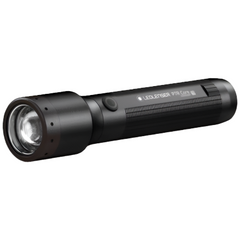
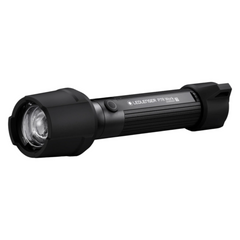
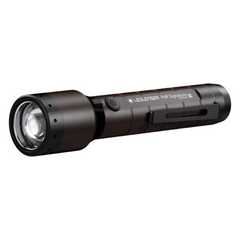
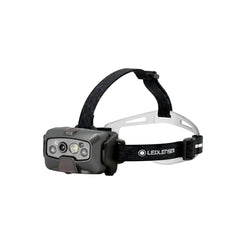
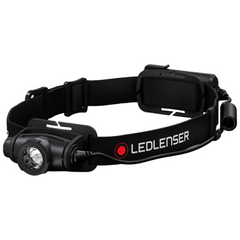
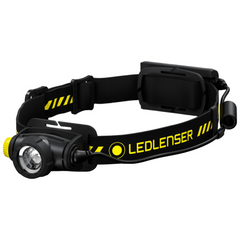
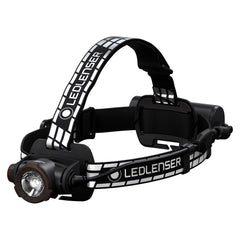
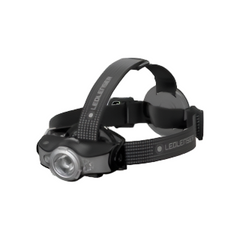
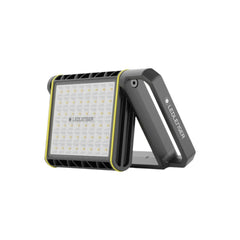
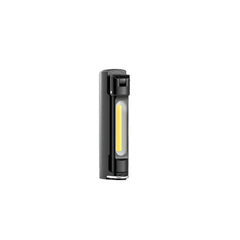
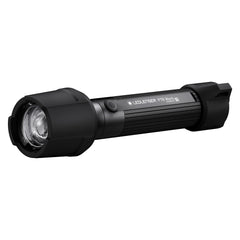
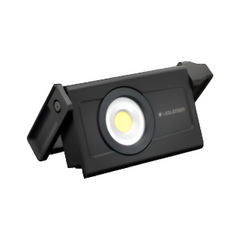
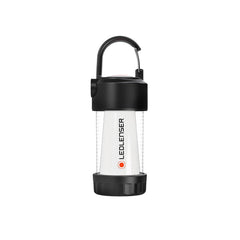
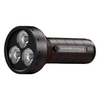 Flashlights
Flashlights
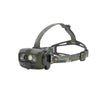 Headlamps
Headlamps
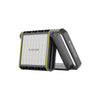 Area Lights
Area Lights
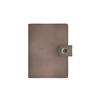 Sale
Sale
 THE P-SERIES: REDEFINED
THE P-SERIES: REDEFINED
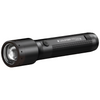 Core Series Flashlights
Core Series Flashlights
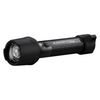 Work Series Flashlights
Work Series Flashlights
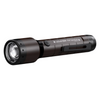 Signature Series Flashlights
Signature Series Flashlights
 HF Series Headlamps
HF Series Headlamps
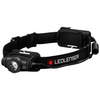 Core Series Headlamps
Core Series Headlamps
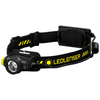 Work Series Headlamps
Work Series Headlamps
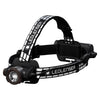 Signature Series Headlamps
Signature Series Headlamps
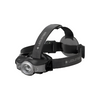 Outdoor Headlamps
Outdoor Headlamps
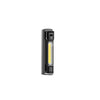 W Series
W Series
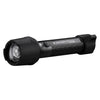 All Work Lights
All Work Lights
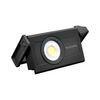 Flood Lights
Flood Lights
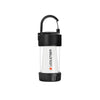 Lanterns
Lanterns